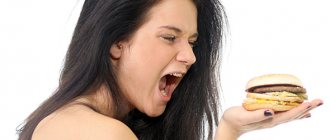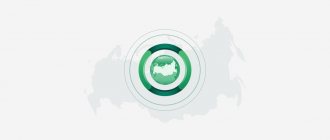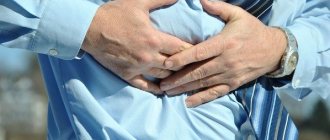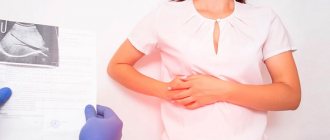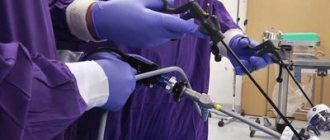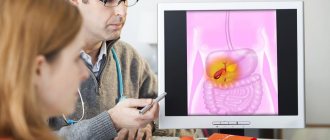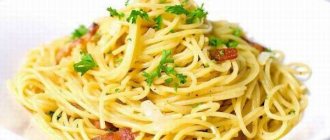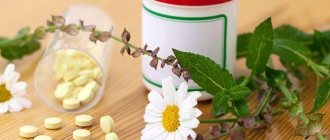Medical editor: Zemereva N.Yu., physiotherapist July, 2020.
Biliary dyskinesia (BDSD) is said to occur when the tone of the bile ducts decreases, resulting in disruption of the outflow and circulation of bile.
A distinction is made between dyskinesia of the hyperkinetic type (increased tone of the gallbladder) and dyskinesia of the hypotonic type (weakened tone of the gallbladder).
The causes of JVP are:
- poor nutrition with irregular eating patterns;
- liver and gallbladder diseases;
- alcohol abuse.
General rules
Bile is continuously secreted by the liver, between meals it accumulates in the gallbladder, and after meals it enters the duodenum.
Disorders of the biliary system (dyskinesia) are associated with uncoordinated, excessive or insufficient contraction of the gallbladder, ducts and ductal sphincters. Stagnation of bile in the gallbladder is caused by dyskinesia of the hypotonic type, in which there is insufficient reduction of bile, and a small amount of bile enters the digestive tract, which disrupts the functioning of the gastrointestinal tract (intestinal motility is inhibited, the absorption of vitamins , calcium , iron , which in turn leads to the development various diseases.
This condition is functional and can be caused by constant consumption of fatty and spicy foods, breaks between meals, nervous experiences, hormonal disorders ( menopause ) and diseases of the gastrointestinal tract. However, functional disorders can contribute to the appearance of organic pathology of the liver, pancreas, biliary system or duodenum. Stagnation of bile can cause an inflammatory process in the gallbladder - dyskinesia in most cases precedes cholecystitis , since prolonged disturbances in bladder emptying lead to excessive growth of pathogenic flora in the intestine, which leads to infection of the gallbladder.
cholesterol content . In the bladder, the process of bile thickening occurs, and it becomes more saturated with cholesterol. It can be said that hypotonic dysfunction promotes the loss of cholesterol crystals. At the initial stages, ultrasound reveals thick bile (biliary sludge), which indicates a violation of its physicochemical properties. During this period, it is important to normalize bile secretion; if the changes are not eliminated, the formation of microliths begins.
Olive oil
One of the treatment methods is to cleanse the bile ducts and gallbladder in a medical facility by duodenal lavage with warm mineral water or the administration of a 20% sorbitol solution. This procedure reduces spasm of the sphincters and increases the flow of bile. You can carry out so-called “blind probing” at home once a week. To carry it out, use olive oil (drink 30 ml on an empty stomach) or xylitol (20 g of powder per 50 ml of water). After consuming them, the patient should lie down in bed with a heating pad applied to the liver area. It is forbidden to perform tubing if there are stones in the bladder or ducts, since the procedure may dislodge stones that will cause blockage of the ducts.
If there is poor outflow of bile, the patient is bothered by constant aching pain in the right hypochondrium, which can intensify or weaken. Nausea and vomiting , constipation , bitterness in the mouth , weakness and fatigue are also noted
To eliminate stagnation, choleretics ( Holosas , Holagol , Allochol , Cholenzym , Liobil , Decholin , Biliton , Kholamine , Suprakol ) are prescribed, which stimulate the bile-forming function of the liver and cholekinetics, which increase the tone of the bladder ( Sorbitol , Mannitol , Xylitol , Berberine sulfate (barberry leaf extract) , Flamin (immortelle extract), Holosas (rose hip extract) Treatment necessarily involves a balanced diet.
A special diet has been developed for stagnation of bile in the gallbladder - this is a variant of Table No. 5 Diet No. 5L/F (lipotropic-fat). It is aimed at stimulating bile secretion, improving bile circulation and intestinal motor function. It also has a lipotropic effect (prevents fatty liver) and helps remove cholesterol from the body. It is prescribed not only for hypomotor dyskinesia, but also after cholecystectomy in the presence of bile stasis syndrome.
This is a complete diet with a physiological content of proteins, carbohydrates (simple carbohydrates are limited), but a high content of fats (due to vegetable ones containing polyunsaturated fatty acids) and enriched with lipotropic substances.
Basic principles of nutrition:
- Vegetable oils in the diet make up 50% of the total amount of fats; if calculated more accurately, their amount should be 1.0-1.2 g per kg of the patient’s weight.
- Contains lipotropic products (cottage cheese, egg whites, fish, lean meat).
- A large number of vegetables, fruits and wheat bran have been introduced.
- Food is cooked in water (steam) and baked; frying is excluded.
- Grinding food is not necessary.
- Fractional meals (up to 5-6 times).
- Salt is limited to 8 g.
- Liquids up to 1.5-2 liters.
- Easily digestible carbohydrates (sweets, sugar, honey, jams, preserves), which cause bile stagnation, are limited.
- Extractives and cholesterol, spices, whole milk, and animal fats are limited.
As already mentioned, this condition requires frequent and split meals (this improves the flow of bile), as well as including choleretic foods in the diet so that bile enters the intestines in a timely manner. After all, the main function of bile is digestive. The main components of bile are involved in the digestion of fats, making them available for further action by pancreatic lipase. The excretory function is also important (removal of bile pigments, excess cholesterol, bacterial toxins, heavy metal salts and drug metabolites from the body).
List of products that have a choleretic effect:
- Vegetable oils. They are rich in polyunsaturated fatty acids, phospholipids, vitamin E.
- Unsaturated fatty acids (arachidonic, linoleic) are part of cell membranes, help normalize cholesterol metabolism, participate in the synthesis of prostaglandins, which dilute bile, and increase the contractility of the gallbladder.
- It is important to use vegetable oils without heat treatment for salad dressings. Eating vegetables with vegetable oil gives a double effect; moreover, it is safe to use compared to consuming oil with spoons (contraindicated in case of cholelithiasis).
- Almost all vegetables, fruits, and berries stimulate bile secretion and also relieve constipation. This point is important, since daily bowel movements have a tonic effect on the bile ducts. The most pronounced effect is found in oranges, avocados, tangerines, melons, watermelons, prunes, pears, lemons, and among vegetables - dill, rhubarb, spinach.
- Juices - cabbage, beetroot, lingonberry.
- Wheat bran (30 g per day). They are steamed with boiling water and, once swollen, added to all dishes, 2 tablespoons three times a day. Bran improves the flow of bile and reduces the likelihood of stone formation, since it reduces the cholesterol content in bile.
- Egg yolks.
- Turmeric.
This list of choleretic food products can be supplemented with herbs that enhance contractions and eliminate stagnation of bile: calamus, barberry, lingonberry, immortelle, oregano, coriander, dandelion, knotweed, rowan, caraway, thyme, chicory, rose hips, chicory.
Healing herbs
It must be remembered that choleretic products must be included in the diet carefully, taking into account their tolerance. This is especially true for gallstone disease. If consuming them causes pain or increases bitterness in the mouth (which can be observed in the presence of cholecystitis), then this product is excluded from the diet.
Sometimes, if the bladder is insufficiently emptied, a magnesium diet is recommended, which is based on Table No. 5 , enriched with products containing magnesium: wholemeal bread and bran bread, wheat bran products, buckwheat and millet cereals, bran decoction, vegetables and fruits, dried fruits.
Typically, biliary dyskinesia of the hypotonic type is accompanied by constipation , in this regard, Diet No. 3 with an increase in the amount of choleretic products can be effective. This is a complete diet that can be constantly followed and includes foods that enhance intestinal motility and bowel movements (vegetables, fruits, baked goods with bran, cereals, fermented milk drinks, bran.). As you can see, the composition of the diets is very similar.
Also excluded are products that increase fermentation and rotting (fried foods, legumes, carbohydrates, fatty foods). On an empty stomach it is recommended to drink water with honey, juices, and at night: kefir, infusions of dried fruits (prunes, dried apricots) and then eat steamed fruits and fresh fruits.
Bile in the stomach (duodenogastric reflux)
Duodenogastric reflux is the reflux of the contents of the duodenum into the stomach cavity. Normally, after a certain period of time after food enters the stomach, a portion of bile is released into the lumen of the duodenum, aimed at further, more thorough digestion of the food bolus. The presence of bile creates an alkaline environment in the cavity of the duodenum. At the border of the stomach and duodenum there is a pyloric sphincter, which prevents the movement of food in the opposite direction and separates the acidic environment of the stomach from the alkaline environment of the duodenum. If the function of the sphincter is impaired, for example, if it is not fully closed, the alkaline contents of the duodenum enter the stomach. Burning has an irritating effect on the gastric mucosa, which, when exposed to it regularly, causes a chronic inflammatory process called reflux gastritis.
Authorized Products
- Butter, olive, corn, flaxseed, sunflower oil. The ratio of animal and vegetable fats should be 1:1. A prerequisite is that all oils are introduced into the finished dish in their natural form. It is natural vegetable oils that have not undergone heat treatment that cause the production of cholecystokinin , which stimulates the formation of bile.
- Wheat bread with bran, rye. Only stale bread is allowed; biscuits, whole grain bread and bran bread are allowed. For the whole day: 150 g of wheat bread and 100 g of rye bread are allowed.
- Soups with vegetable broths (from cereals, vegetables or noodles). You can eat borscht and cabbage soup, beetroot soup, and fruit soups.
- Lean beef, rabbit, chicken, veal. You can boil them and make beef stroganoff from boiled meat; you can bake them after boiling. Serve in pieces or chopped (steamed or baked meatballs, cutlets, meatballs and quenelles).
- Baked lean fish, fish stuffed with vegetables, steamed and baked fish cutlets, soufflés and quenelles.
- Cereal dishes include crumbly porridges made from rice, buckwheat and oatmeal, viscous semolina, and pasta.
- Fermented milk products should be chosen as low-fat. It is recommended to consume low-fat cottage cheese daily (in its natural form and as part of dishes). Milk and sour cream are added only to dishes.
- Eggs are allowed to be eaten as an omelet or soft-boiled.
- Various vegetables in baked, boiled or stewed form, salads from fresh vegetables with vegetable oil, vegetable caviar, puree of carrots, pumpkin, green peas. Mainly the diet should contain cabbage of all varieties (if poor tolerance is limited to fresh white cabbage), beets and carrots, pumpkin, dill, parsley.
- Sour cream, vegetable and milk sauces are allowed. You can bake fish, meat and vegetables with sauces.
- Fruits and berries should be chosen that are not acidic and consumed fresh and in the form of compotes, jelly, fruit drinks, and infusions.
- Sweets are limited - marmalade, honey, jam, sugar (30 g per day).
- Drinks: rosehip infusion, vegetable juices, weak tea (preferably with milk), bran decoction, still mineral water.
Table of permitted products
| Proteins, g | Fats, g | Carbohydrates, g | Calories, kcal | |
Vegetables and greens | ||||
| eggplant | 1,2 | 0,1 | 4,5 | 24 |
| zucchini | 0,6 | 0,3 | 4,6 | 24 |
| cabbage | 1,8 | 0,1 | 4,7 | 27 |
| broccoli | 3,0 | 0,4 | 5,2 | 28 |
| Brussels sprouts | 4,8 | 0,0 | 8,0 | 43 |
| cauliflower | 2,5 | 0,3 | 5,4 | 30 |
| carrot | 1,3 | 0,1 | 6,9 | 32 |
| cucumbers | 0,8 | 0,1 | 2,8 | 15 |
| salad pepper | 1,3 | 0,0 | 5,3 | 27 |
| parsley | 3,7 | 0,4 | 7,6 | 47 |
| iceberg lettuce | 0,9 | 0,1 | 1,8 | 14 |
| tomatoes | 0,6 | 0,2 | 4,2 | 20 |
| pumpkin | 1,3 | 0,3 | 7,7 | 28 |
| dill | 2,5 | 0,5 | 6,3 | 38 |
Fruits | ||||
| bananas | 1,5 | 0,2 | 21,8 | 95 |
| apples | 0,4 | 0,4 | 9,8 | 47 |
Nuts and dried fruits | ||||
| raisin | 2,9 | 0,6 | 66,0 | 264 |
| dried figs | 3,1 | 0,8 | 57,9 | 257 |
| dried apricots | 5,2 | 0,3 | 51,0 | 215 |
| dried apricots | 5,0 | 0,4 | 50,6 | 213 |
| prunes | 2,3 | 0,7 | 57,5 | 231 |
Cereals and porridges | ||||
| buckwheat (kernel) | 12,6 | 3,3 | 62,1 | 313 |
| oat groats | 12,3 | 6,1 | 59,5 | 342 |
| pearl barley | 9,3 | 1,1 | 73,7 | 320 |
| rice | 6,7 | 0,7 | 78,9 | 344 |
Flour and pasta | ||||
| pasta | 10,4 | 1,1 | 69,7 | 337 |
| noodles | 12,0 | 3,7 | 60,1 | 322 |
| buckwheat noodles | 14,7 | 0,9 | 70,5 | 348 |
Bakery products | ||||
| bran bread | 7,5 | 1,3 | 45,2 | 227 |
| whole grain bread | 10,1 | 2,3 | 57,1 | 295 |
Confectionery | ||||
| jam | 0,3 | 0,2 | 63,0 | 263 |
| jelly | 2,7 | 0,0 | 17,9 | 79 |
| marshmallows | 0,8 | 0,0 | 78,5 | 304 |
| milk candies | 2,7 | 4,3 | 82,3 | 364 |
| fondant candies | 2,2 | 4,6 | 83,6 | 369 |
| fruit and berry marmalade | 0,4 | 0,0 | 76,6 | 293 |
| paste | 0,5 | 0,0 | 80,8 | 310 |
| Maria cookies | 8,7 | 8,8 | 70,9 | 400 |
Raw materials and seasonings | ||||
| honey | 0,8 | 0,0 | 81,5 | 329 |
| sugar | 0,0 | 0,0 | 99,7 | 398 |
Dairy | ||||
| kefir 1.5% | 3,3 | 1,5 | 3,6 | 41 |
| Ryazhenka | 2,8 | 4,0 | 4,2 | 67 |
Cheeses and cottage cheese | ||||
| cottage cheese | 17,2 | 5,0 | 1,8 | 121 |
| cottage cheese 1% | 16,3 | 1,0 | 1,3 | 79 |
Meat products | ||||
| beef | 18,9 | 19,4 | 0,0 | 187 |
| rabbit | 21,0 | 8,0 | 0,0 | 156 |
Bird | ||||
| boiled chicken breast | 29,8 | 1,8 | 0,5 | 137 |
| boiled chicken drumstick | 27,0 | 5,6 | 0,0 | 158 |
| boiled turkey fillet | 25,0 | 1,0 | — | 130 |
Eggs | ||||
| chicken eggs | 12,7 | 10,9 | 0,7 | 157 |
Fish and seafood | ||||
| flounder | 16,5 | 1,8 | 0,0 | 83 |
| pollock | 15,9 | 0,9 | 0,0 | 72 |
| cod | 17,7 | 0,7 | — | 78 |
| hake | 16,6 | 2,2 | 0,0 | 86 |
Oils and fats | ||||
| butter | 0,5 | 82,5 | 0,8 | 748 |
| corn oil | 0,0 | 99,9 | 0,0 | 899 |
| linseed oil | 0,0 | 99,8 | 0,0 | 898 |
| olive oil | 0,0 | 99,8 | 0,0 | 898 |
| sunflower oil | 0,0 | 99,9 | 0,0 | 899 |
Non-alcoholic drinks | ||||
| mineral water | 0,0 | 0,0 | 0,0 | — |
| green tea | 0,0 | 0,0 | 0,0 | — |
Juices and compotes | ||||
| apricot juice | 0,9 | 0,1 | 9,0 | 38 |
| carrot juice | 1,1 | 0,1 | 6,4 | 28 |
| peach juice | 0,9 | 0,1 | 9,5 | 40 |
| plum juice | 0,8 | 0,0 | 9,6 | 39 |
| tomato juice | 1,1 | 0,2 | 3,8 | 21 |
| pumpkin juice | 0,0 | 0,0 | 9,0 | 38 |
| rose hip juice | 0,1 | 0,0 | 17,6 | 70 |
| * data is per 100 g of product | ||||
Interesting recipes
Vegetable salad “Summer”
- White cabbage - 100 grams.
- Medium size cucumber - 1 pc.
- Tomatoes - 2 pcs.
- Vegetable oil - 2 tbsp. spoons.
- Salt - 2 or 3 pinches.
- Greens to taste.
Slice the cabbage as thinly as possible and rub with your hands until soft. Cut the cucumber into half rings, tomatoes into slices. Place the vegetables on a plate, add salt, add oil and stir. Chop the greens and sprinkle them on the salad. You can not chop the greens, but use them to decorate the finished dish.
Fruit salad “Assorted”
- Orange - 1.
- Mandarin - 4.
- Banana - 1.
- Kiwi - 2.
- Yogurt - 3 or 4 tablespoons.
Peel the fruits. Cut the kiwi and banana into rings, disassemble the tangerines and orange into slices. Place nicely on a plate and top with yogurt.
Oven-cooked vegetable salad
- Beetroot - 1.
- Potato - 1.
- White of one egg.
- Salt to taste.
- Sour cream - 2 - 3 spoons.
Vegetables are cut into small cubes. The egg white is crushed. Place potatoes on the bottom of the plate, then an egg. Beets are placed on top. The salad needs to be salted. Pour in sour cream and leave for several hours.
ATTENTION: It is better to bake vegetables in the oven in foil. When cooked, some of the nutrients go into a decoction that no one needs. The oven retains all the beneficial qualities and excellent taste.
Seafood aspic
- Seafood “Sea cocktail” - 200 grams.
- Gelatin - 1 pack.
- Water - 1 liter.
- Salt to taste.
Pour seafood with a liter of water, add salt and place on medium heat. Soak gelatin in cold boiled water per 0.5 liters of broth. Place the prepared seafood on a plate. Add gelatin to half a liter of broth. Bring to a boil and remove the pan from the stove. Carefully pour the slightly cooled broth into a plate with seafood and leave until completely cooled. You can decorate the finished dish with herbs.
New Year's menu
- Main course - oven-baked chicken with potatoes
- Cold appetizers - fish aspic, squid with vegetables, sliced boiled meat, chicken or turkey jellied meat.
- Vegetable and fruit salads.
- Sweet dishes;
- Baked pies with different fillings.
- Fruit-jelly cake.
- Sweets without chocolate.
- Fruits.
- Drinks - milk and fruit cocktails, juices.
It is worth remembering that all first courses are prepared according to the usual recipe, but the meat should not be fatty, and the tomato paste and onions should not be fried. Boiled onions can be consumed; we add them and tomato paste in small quantities during cooking. Vegetable oil should not be added to meat first courses.
Cutlets, meatballs, and meatballs are prepared according to the usual recipes. You need to exclude garlic. Limit the number of eggs to 1 or 2. Cook in the oven or steam. Baked meat products are not inferior in taste to fried ones.
Vegetable soups become much more tender if they are blended or rubbed through a sieve.
Fully or partially limited products
- Extractive dishes (broths), spicy vegetables and herbs with a high content of essential oils: horseradish, parsnips, celery, onions, garlic, shallots, katran, oregano, marjoram, savory, rosemary, basil, radishes, turnips, radish.
- Fatty meat and fish, goose and duck meat, smoked meats, fish caviar, salted fish, refractory fats and lard, sausages, all types of canned food.
- By-products (internal organs of animals due to their high cholesterol content).
- Hard-boiled and fried eggs, which are difficult to digest.
- Fresh bread, pastry, fried pastries (pies, pancakes, pancakes), cakes, pastries, puff pastry.
- Whole fat milk and cream.
- Hot sauces.
- Carbonated and alcoholic drinks, coffee, chocolate, cocoa.
Table of prohibited products
| Proteins, g | Fats, g | Carbohydrates, g | Calories, kcal | |
Vegetables and greens | ||||
| canned vegetables | 1,5 | 0,2 | 5,5 | 30 |
| swede | 1,2 | 0,1 | 7,7 | 37 |
| peas | 6,0 | 0,0 | 9,0 | 60 |
| bulb onions | 1,4 | 0,0 | 10,4 | 41 |
| chickpeas | 19,0 | 6,0 | 61,0 | 364 |
| radish | 1,2 | 0,1 | 3,4 | 19 |
| white radish | 1,4 | 0,0 | 4,1 | 21 |
| beans | 7,8 | 0,5 | 21,5 | 123 |
| horseradish | 3,2 | 0,4 | 10,5 | 56 |
| garlic | 6,5 | 0,5 | 29,9 | 143 |
| spinach | 2,9 | 0,3 | 2,0 | 22 |
| sorrel | 1,5 | 0,3 | 2,9 | 19 |
Berries | ||||
| grape | 0,6 | 0,2 | 16,8 | 65 |
Mushrooms | ||||
| mushrooms | 3,5 | 2,0 | 2,5 | 30 |
| marinated mushrooms | 2,2 | 0,4 | 0,0 | 20 |
Nuts and dried fruits | ||||
| nuts | 15,0 | 40,0 | 20,0 | 500 |
| almond | 18,6 | 57,7 | 16,2 | 645 |
Snacks | ||||
| potato chips | 5,5 | 30,0 | 53,0 | 520 |
Flour and pasta | ||||
| vareniki | 7,6 | 2,3 | 18,7 | 155 |
| dumplings | 11,9 | 12,4 | 29,0 | 275 |
Bakery products | ||||
| buns | 7,9 | 9,4 | 55,5 | 339 |
Confectionery | ||||
| pastry cream | 0,2 | 26,0 | 16,5 | 300 |
| shortbread dough | 6,5 | 21,6 | 49,9 | 403 |
Ice cream | ||||
| ice cream | 3,7 | 6,9 | 22,1 | 189 |
Chocolate | ||||
| chocolate | 5,4 | 35,3 | 56,5 | 544 |
Raw materials and seasonings | ||||
| mustard | 5,7 | 6,4 | 22,0 | 162 |
| mayonnaise | 2,4 | 67,0 | 3,9 | 627 |
Dairy | ||||
| milk 4.5% | 3,1 | 4,5 | 4,7 | 72 |
| cream 35% (fat) | 2,5 | 35,0 | 3,0 | 337 |
| whipped cream | 3,2 | 22,2 | 12,5 | 257 |
Meat products | ||||
| fatty pork | 11,4 | 49,3 | 0,0 | 489 |
| salo | 2,4 | 89,0 | 0,0 | 797 |
| bacon | 23,0 | 45,0 | 0,0 | 500 |
Sausages | ||||
| smoked sausage | 9,9 | 63,2 | 0,3 | 608 |
Bird | ||||
| smoked chicken | 27,5 | 8,2 | 0,0 | 184 |
| duck | 16,5 | 61,2 | 0,0 | 346 |
| smoked duck | 19,0 | 28,4 | 0,0 | 337 |
| goose | 16,1 | 33,3 | 0,0 | 364 |
Eggs | ||||
| hard-boiled chicken eggs | 12,9 | 11,6 | 0,8 | 160 |
Fish and seafood | ||||
| smoked fish | 26,8 | 9,9 | 0,0 | 196 |
| black caviar | 28,0 | 9,7 | 0,0 | 203 |
| salmon caviar granular | 32,0 | 15,0 | 0,0 | 263 |
| salmon | 19,8 | 6,3 | 0,0 | 142 |
| canned fish | 17,5 | 2,0 | 0,0 | 88 |
| salmon | 21,6 | 6,0 | — | 140 |
| trout | 19,2 | 2,1 | — | 97 |
Oils and fats | ||||
| animal fat | 0,0 | 99,7 | 0,0 | 897 |
| cooking fat | 0,0 | 99,7 | 0,0 | 897 |
Alcoholic drinks | ||||
| whiskey | 0,0 | 0,0 | 0,4 | 235 |
| vodka | 0,0 | 0,0 | 0,1 | 235 |
| cognac | 0,0 | 0,0 | 0,1 | 239 |
| liquor | 0,3 | 1,1 | 17,2 | 242 |
Non-alcoholic drinks | ||||
| cola | 0,0 | 0,0 | 10,4 | 42 |
| instant coffee dry | 15,0 | 3,5 | 0,0 | 94 |
| sprite | 0,1 | 0,0 | 7,0 | 29 |
| * data is per 100 g of product | ||||
Menu (Power Mode)
With hypotonic dyskinesia of the bladder, the “choleretic” diet must be followed constantly and, if followed correctly, complications ( cholecystitis , cholangitis , cholelithiasis) can be prevented. It is advisable to include vegetables (in any form) and fruits, vegetable oils in every meal. In order to enhance the motility of the gallbladder and reduce cholesterol, you need to consume various oils: corn, sunflower, flaxseed, olive. Be sure to include bran in its natural form or pre-steamed in all dishes (in the absence of diarrhea). It is better to eat whole grains and dried fruits daily. At night you need to consume fresh kefir. Below is a one-day menu, but based on it you can create a diet for a week.
| Breakfast |
|
| Lunch |
|
| Dinner |
|
| Afternoon snack |
|
| Dinner |
|
| For the night |
|
How long should food restrictions be observed?
Following a diet makes it possible to live without exacerbations of the disease. One gets the impression that the illness has passed and all restrictions can be abandoned. There is no need to do this under any circumstances. Fried, smoked or very fatty foods will cause aggravation, so it is better to avoid eating them forever.
Giving up bad habits, proper nutrition and timely treatment of concomitant diseases will help you lead a life no different from the life of a healthy person.
Attitude to alcohol and feasts, how to behave during the holidays?
In case of diseases of the endocrine glands, drinking alcoholic beverages is extremely undesirable. Therefore, it is better to completely abandon it and prefer natural juices, compotes, and tea to wine and vodka.
Eating large amounts of hard-to-digest food, fried, fatty, and sweet foods when the gallbladder is inflamed is also contraindicated. Such delicacies are found especially often on the holiday table, so you should carefully choose food and not overeat. Lean meat, boiled sausage, vegetable salads, fruits, light sweets - these are the choices for a patient suffering from bile stagnation.
Reviews and results
Nutritional therapy is mandatory for this disease, and patient reviews confirm this. After just 2 weeks, the condition improves: heaviness in the right hypochondrium, belching, bloating and constipation disappear. The important thing is that the diet is easy to tolerate and feasible for a long time. The only inconvenience may be the need for individual preparation.
- “... A month ago, heaviness appeared under the rib, bitterness and sometimes nausea. The examination revealed an enlarged gallbladder with thick bile. True, there is no cholecystitis yet. I was prescribed treatment and a diet, which I have been following for 3 months. I feel good, but I decided to eat like this all the time, or at least close to a diet. I associate my condition with nervous overstrain at work and irregular nutrition - sometimes I don’t manage to eat during the whole day at work, and late in the evening I work out. The doctor warned that this should absolutely not be done. I think that our ignorance and inability to organize is taking its toll. After all, it costs nothing to drink yogurt or eat an apple. Now I’ve decided not to neglect my health and eat right”;
- “... After the removal of the gallbladder, intrahepatic stagnation appeared six months later and this particular diet was recommended to me. I can say that the nutrition is complete and not difficult to follow. The exceptions are fatty, fried, spicy and smoked foods. I ate a lot of vegetables - first boiled or baked, and then I started adding fresh salads. There was no upset or discomfort. After the second week of the diet, I noticed an improvement - the heaviness under the rib and bloating disappeared. Now I feel good and have decided to eat like this all the time. I believe that therapeutic nutrition makes sense”;
- “... I suffer from cholecystitis and hypotonic dyskinesia. I’ve known about diet for a long time, but I always didn’t attach any importance to it. But after the last exacerbation, when I was in the hospital, I decided to change my diet and involve my family in this - I began to cook everything in a double boiler. Surprisingly, they supported me and after a week I noticed lightness in my stomach, lack of bloating (for my husband), vigor and activity. This is because the food is healthy and nutritious.”
